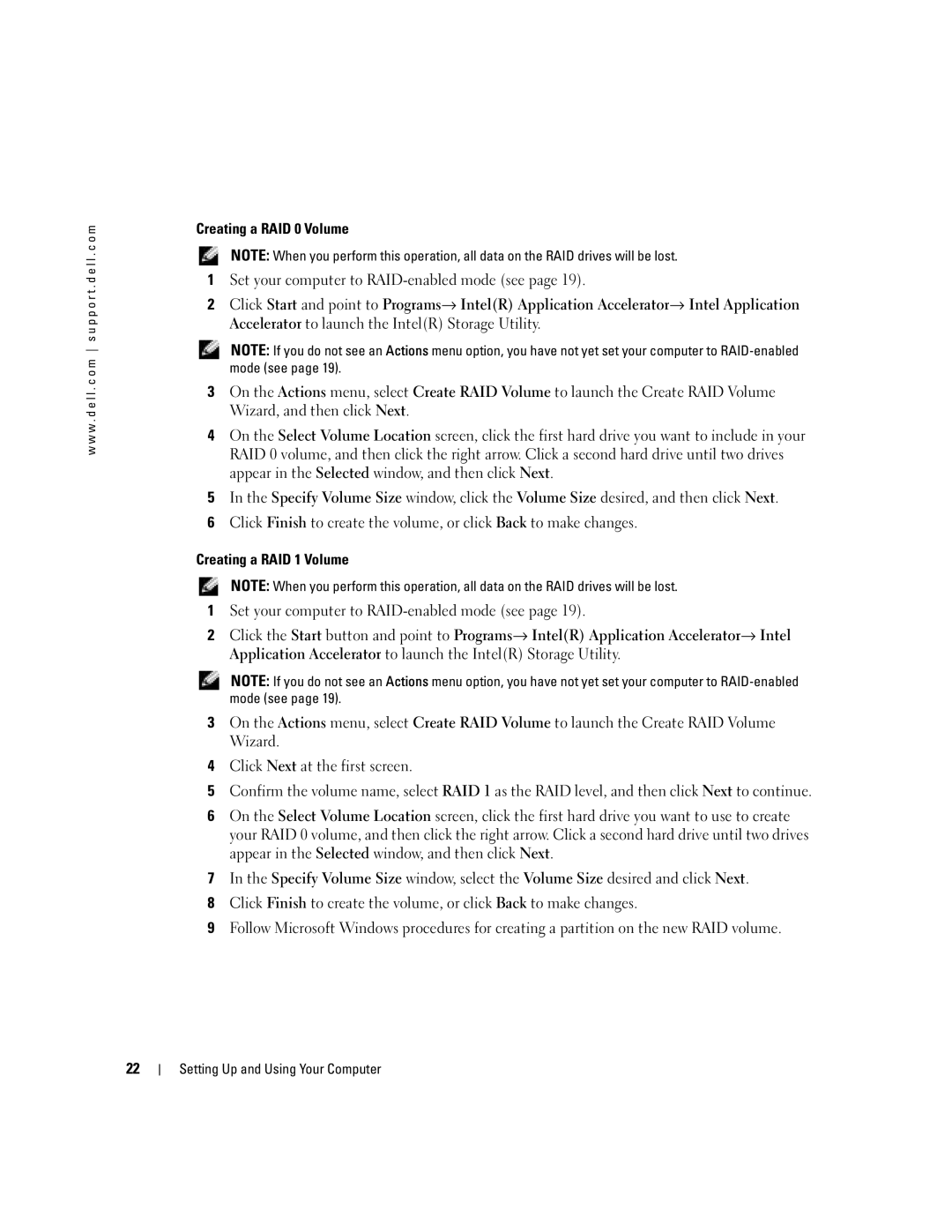
w w w . d e l l . c o m s u p p o r t . d e l l . c o m
Creating a RAID 0 Volume
NOTE: When you perform this operation, all data on the RAID drives will be lost.
1Set your computer to
2 Click Start and point to Programs→ Intel(R) Application Accelerator→ Intel Application Accelerator to launch the Intel(R) Storage Utility.
NOTE: If you do not see an Actions menu option, you have not yet set your computer to
3On the Actions menu, select Create RAID Volume to launch the Create RAID Volume Wizard, and then click Next.
4On the Select Volume Location screen, click the first hard drive you want to include in your RAID 0 volume, and then click the right arrow. Click a second hard drive until two drives appear in the Selected window, and then click Next.
5In the Specify Volume Size window, click the Volume Size desired, and then click Next.
6Click Finish to create the volume, or click Back to make changes.
Creating a RAID 1 Volume
NOTE: When you perform this operation, all data on the RAID drives will be lost.
1Set your computer to
2 Click the Start button and point to Programs→ Intel(R) Application Accelerator→ Intel Application Accelerator to launch the Intel(R) Storage Utility.
NOTE: If you do not see an Actions menu option, you have not yet set your computer to
3On the Actions menu, select Create RAID Volume to launch the Create RAID Volume Wizard.
4Click Next at the first screen.
5Confirm the volume name, select RAID 1 as the RAID level, and then click Next to continue.
6On the Select Volume Location screen, click the first hard drive you want to use to create your RAID 0 volume, and then click the right arrow. Click a second hard drive until two drives appear in the Selected window, and then click Next.
7In the Specify Volume Size window, select the Volume Size desired and click Next.
8Click Finish to create the volume, or click Back to make changes.
9Follow Microsoft Windows procedures for creating a partition on the new RAID volume.
22
